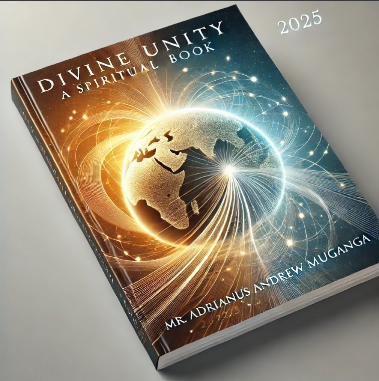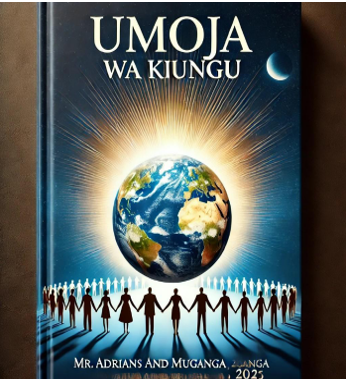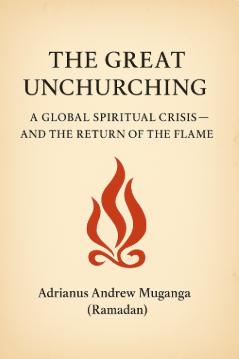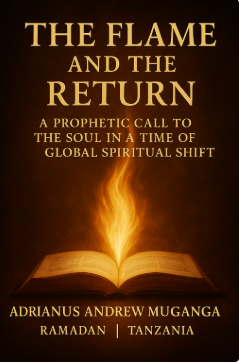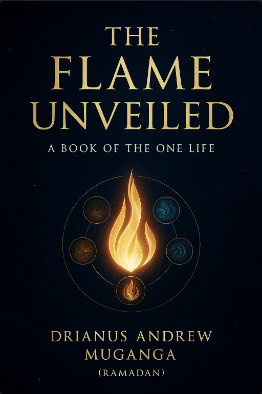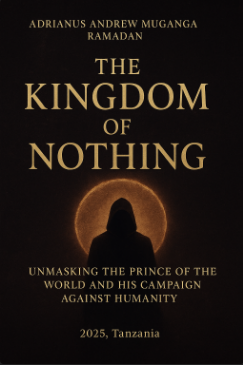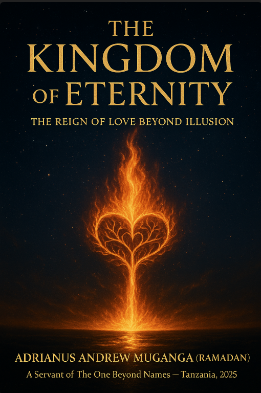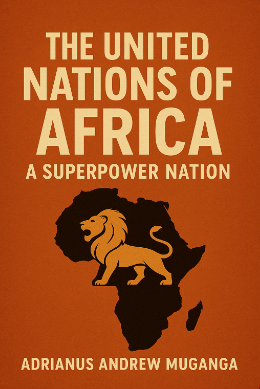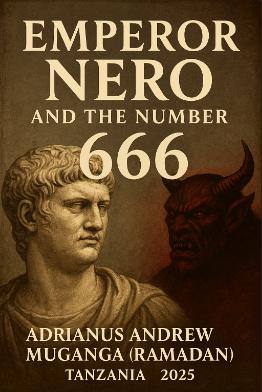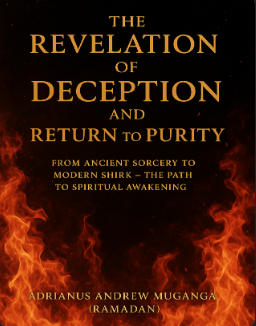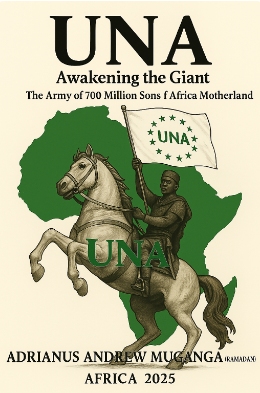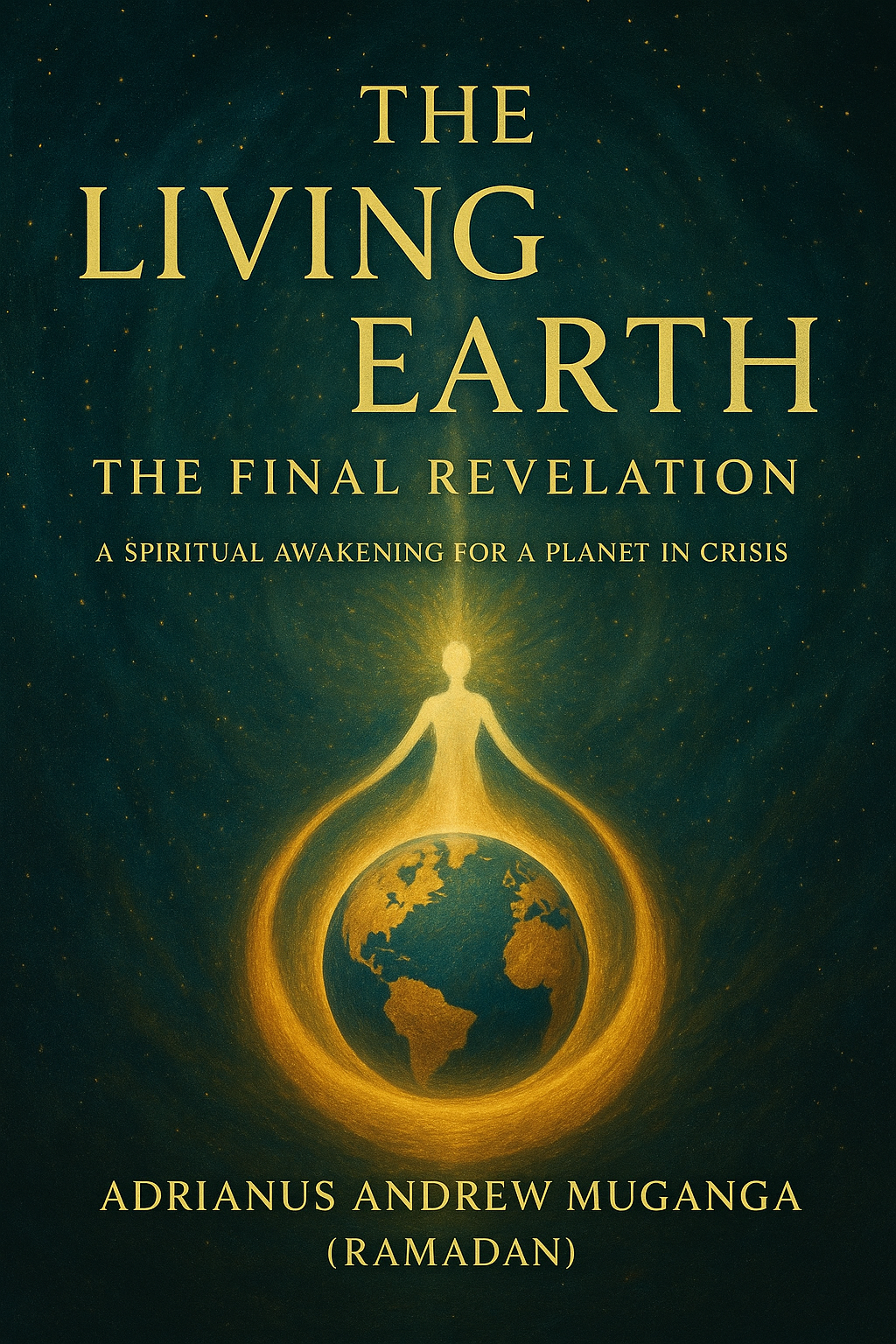
The Last Veil
Subtitle: The End Of The Deceiver
Author: Adrianus Muganga
The Last Veil — The End of the Deceiver explores how humanity’s modern crises—spiritual confusion, cultural decline, ecological collapse, and psychological imbalance—are rooted in an ancient rebellion against humility and remembrance. Tracing the origin of deception to the refusal of Iblīs, the book shows how pride evolved into systems of distraction that influence the heart, mind, speech, power, culture, and spirit. Through scripture, history, neuroscience, and lived testimony, the author reveals how deception spreads not by force, but through imitation, ego, and the erosion of conscience. Practical guidance in breathwork, remembrance, ethical leadership, and community stewardship offer pathways toward clarity and balance. The book concludes that when illusions collapse, humanity must return to its original covenant: to protect life, honor the Creator, and serve creation with humility. Ultimately, deception ends when awareness rises and hearts remember the One who entrusted existence.
Keywords for this book
You can only order 1 ebook at a time
Book summary
The Last Veil — The End of the Deceiver is a comprehensive exploration of humanity’s spiritual, psychological, ecological, and cultural crisis in the modern age. It argues that confusion, moral fatigue, ecological collapse, and social fragmentation are not random historical accidents, but symptoms of a deeper cosmic forgetting: the loss of remembrance, stewardship, and moral orientation. Through a multidisciplinary lens combining scripture, philosophy, history, environmental ethics, neuroscience, and lived testimony, the author traces the origins of deception from its earliest rebellion to its sophisticated forms today. The book begins by establishing the cosmic context of creation. According to ancient traditions, existence is deliberate: humanity was entrusted with the Amānah—the sacred Trust—to protect life, honor the Creator, and act as responsible stewards of the Earth. Surrounding creation are multiple intelligent orders: angels, beings of pure obedience; humans, bound to clay and community; and jinn, beings of fire endowed with speed and autonomy. Each was fashioned with purpose, but only humans and jinn were granted moral choice. This freedom constitutes both privilege and trial. The first fracture in creation emerges from the refusal of Iblīs, who rejected the command to acknowledge the new human creature. His justification was comparison: fire over clay, brilliance over humility. This primal act of pride inaugurates the architecture of deception, not as denial of God’s existence, but as refusal of God’s wisdom. The adversary’s rebellion becomes method, shaping human history by repeating the same logic—hierarchy, self-exaltation, and disordered desire. Pride becomes the engine of comparison, racism, exploitation, and spiritual arrogance. The book emphasizes that humanity’s crisis is an echo of that first refusal. From this foundation, The Last Veil introduces the concept of the Six Portals: Heart, Mind, Speech, Power, Culture, and Spirit. These are the primary entry points through which influence enters individuals and societies. Each portal has a divine purpose—love, wisdom, truth, service, memory, and connection—but each can be inverted. When the heart transforms love into possession, the mind into cynicism, speech into manipulation, power into domination, culture into spectacle, and spirit into self-worship, deception no longer feels foreign but becomes normalized. The deceiver rarely destroys directly; he imitates, distorts, and distracts. The book continues by revealing how deception evolves into systems. Modern institutions—media, finance, politics, and technological infrastructures—operate on incentives that reward distraction, outrage, and consumer identity. Technology connects bodies but isolates hearts. Economies grow while communities shrink. Knowledge expands while wisdom evaporates. Through psychological repetition and algorithmic reinforcement, individuals internalize impulses they assume are their own. Here, the author shows how neuroscience confirms ancient warnings: repeated stimuli can carve false voices into the conscience, shaping habit, desire, and identity. Particularly significant is the discussion of mental-spiritual illness, distinguishing between biological disorders, trauma-based conditions, and disturbances born from spiritual neglect or influence. The author offers a nuanced approach that includes medical treatment, community accountability, remembrance practices, and environmental grounding. Illness is not moral failure, but unattended imbalance can become a portal. The book argues that the adversary’s greatest tactic is distraction, not possession. He removes remembrance, inflates ego, and convinces humanity that ownership—not stewardship—is the foundation of identity. When people forget their origin, they lose responsibility for creation. This violation is reflected in ecological collapse, economic exploitation, and cultural industries that glorify vanity while degrading community. Climate change, species extinction, soil exhaustion, and resource extraction are presented as spiritual mirrors: the outer world reflects the inner state of the human heart. Historically, the book draws parallels between ancient empires and modern systems. Babylon’s religious-economic control, Rome’s spectacle culture, and contemporary consumer capitalism show striking similarities. The author claims that although faces change, the architecture of the Beast remains: control through fear, domination through debt, entertainment over meaning, and the erasure of the sacred. Yet the text is not pessimistic. The Last Veil outlines restoration strategies. Central to these is remembrance—disciplined awareness of the Creator through prayer, silence, fasting, breath practice, gratitude, and humility. Science supports these practices: breathwork regulates the nervous system; structured ritual strengthens neural pathways; moral reflection reduces impulsivity. The author combines spiritual tradition with cognitive research to show that remembrance is both therapy and resistance. Community stewardship is equally emphasized. Families are re-centered as moral training grounds; art is reframed as healing rather than performance; work becomes sacred labor rather than shallow productivity. Governance reforms include transparency, local sovereignty, debt forgiveness models, community currencies, youth employment programs, and ecological reparations. These are not utopian fantasies but practical blueprints supported by case studies. As societies awaken, indicators appear: corruption becomes visible, propaganda loses potency, whistleblowers gain credibility, and local economies revive. A remnant—small communities committed to stewardship and remembrance—acts as catalyst. When illusions fail, populations begin naming what was once hidden. Naming matters: silence sustains deception, but language unmasks power. The climax of the book addresses the collapse of illusion. When the final veil falls, humanity recognizes that the adversary never possessed real authority; his influence relied on ignorance, ego, distraction, and fear. Collapse is not apocalypse, but unveiling. The author describes a post-veil world grounded in sacred death rituals, ecological covenants, restored marriage, meaningful art, regenerative agriculture, and economies of blessing. Wealth becomes responsibility, not identity. Scientists, artists, and leaders serve life rather than reputation. The Earth becomes teacher again. The final sections include personal testimony recounting transformation from despair to remembrance through fasting, breath discipline, divine guidance, and patient struggle. Appendices provide practical frameworks: a seven-day remembrance program, breath exercises, community rituals, policy blueprints, interviews with former celebrities, and study curricula for groups. Ultimately, the book asserts that deception crumbles when humans remember that life is entrusted, not owned; that power is service; and that humility is strength. The adversary’s defeat is not violent overthrow but inner clarity. The last veil falls when hearts recover the stewardship forgotten in pride. Comprehensive in scope yet intimate in tone, The Last Veil — The End of the Deceiver offers both diagnosis and cure. It is a guide for those who sense that something is profoundly wrong in the world, and who seek not escape, but transformation. The book prepares readers for the age beyond illusion, where only what is true can stand.
